- Porsche model numbers originate from when Professor Ferdinand Porsche opened his design office in 1930. After 30 years of working for other firms, he was 55, and it was time to strike out on his own. Each design from Porsche was sequentially numbered, beginning with Typ 007.
- Family members were arrested in 1946 on suspicion of war crimes in WW II.
Ferry Porsche, Prof. Ferdinand Porsche, and Anton Piech were imprisoned by the allies and questioned for complicity in Nazi war crimes. After they were freed without charges by the Americans, Professor Porsche and Anton Piech were arrested by the French and held in a dungeon for almost two years until a one million franc ransom was paid. - It was the best of times, it was the worst of times…
1947 was a tough time to begin a new company, but Ferry built one anyway as he struggled to save his father’s design firm. Neither the arrests, nor the lack of a factory, nor adequate financing prevented Ferry Porsche from acting on his vision of building a proper European car using the family name. It was Ferry’s way to honor his father’s lifetime work in the automotive industry, a career that began in 1900. - The Porsche car was born in a dirt-floored sawmill.
Lacking a factory did not stop the vision. Gmund, Austria was the family summer home, and some of Porsche’s plans and equipment had been stashed there to escape Allied bombing. Fifty aluminum-bodied coupes were built in a nearby sawmill from 1948-1951, genesis of a company that now produces over 140,000 cars per year. - The Typ 356 prototypes created two different paths that still dominate company practice:
- Typ 356/1 was a mid-engine, tube-frame roadster. It set the stage for later developments in race and street cars that began with the 550 series, as well as continuing in the 914, the Boxster, the Cayman, and the Carrera GT.
- Typ 356/2 was a rear-engine, unibody coupe. It became the starting point for the subsequent 356 series and all versions of the 911.
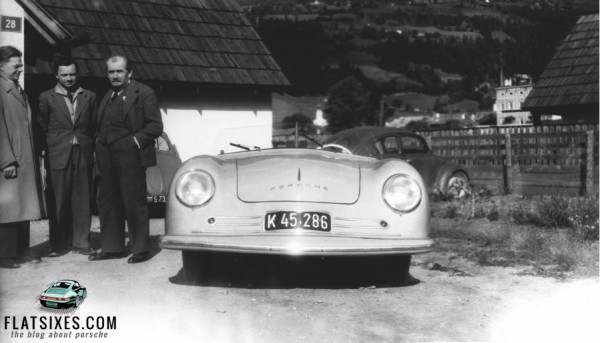
(L-R) Erwin Komenda, Ferry, Dr. F. Porsche, with Typ 356/1
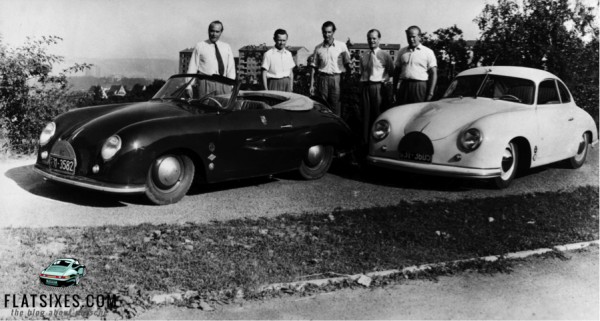
(Second fr L) Ferry Porsche, Midnight Sun Rally, 1950, with 356s (derived from Typ 356/2)
- Porsche transitioned to Zuffenhausen as Ferry negotiated with Volkswagen in 1950. Porsche hired Reutter to build steel bodies for their cars and rented space at Reutter to build the frames and other parts. First-year production at their new home was 298 cars, and the 500th car was built on March 21, 1951.
- Racing successes were immediate.
356s were small, light, fast, and could handle. These features were noticed by competitive spirits, and Porsches quickly racked up road and track successes:1950-51 Swedish Midnight Sun Rally -1100cc class 1st in class 1951 Le Mans 24 Hour -1100cc 1st 1951 Liege-Rome-Liege Rally 1100cc 2nd 1500cc 1st (3rd overall) 1952 Liege-Rome-Liege Rally 1500cc 1st, 3rd, 4th, 9th, 10th overall 1952 Mille Miglia 1100cc 1st in class 1500cc 1st 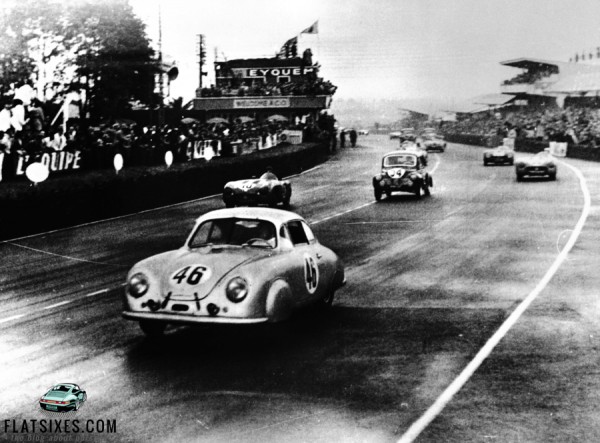
Le Mans, 1951: 1st in class, 1100cc
- Max Hoffman was behind the growth of Porsche. Hoffman fled the Nazis in 1938, arrived in America in 1942, and in 1947 opened a dealership that introduced America to foreign sports cars. He became Porsche’s exclusive dealer in 1950, and repeatedly pushed for more and better cars. Hoffman sold 30 Porsches in 1951, and by 1958, Hoffman had increased importation to 4000 per year, almost 30 percent of Porsche’s annual production. As most of you know, Hoffman played an important part in the development of the Porsche Crest
- Typ 356s were truly hand-built. Even with mechanization and assembly line processes, all Porsche 356s were hand-assembled. Each engine and transaxle was built by one person, whose initials were stamped into the case. Craftsmen finished the bodies using traditional coach building techniques: body lead, wooden paddles, and body files. Check out Made By Hand, the Porsche factory documentary from 1960.
- Total 356 production was 76,000+ cars from 1948-1965. In a Road & Track interview from 1950, Ferry Porsche said that current factory production of six cars per day was sufficient because Porsche was “first and foremost a design and consulting engineering firm.” He did not foresee, at that time, that his “handmade special car” would revolutionize the automobile world and change the direction of Porsche. Forever.
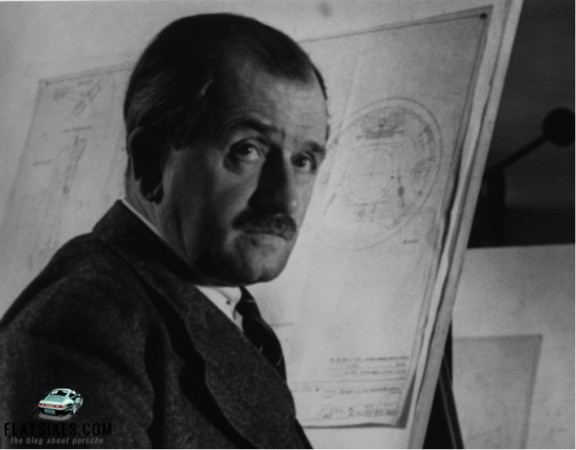
Ferdinand Porsche, Stuttgart design office, 1937
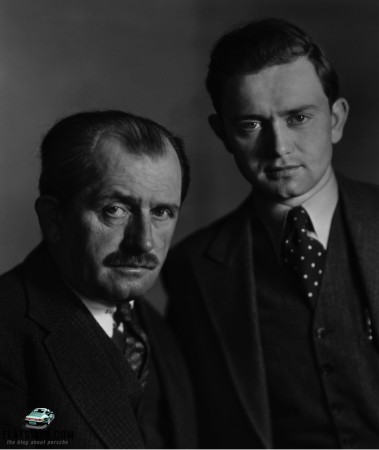
Ferry Porsche with his father, date unknown
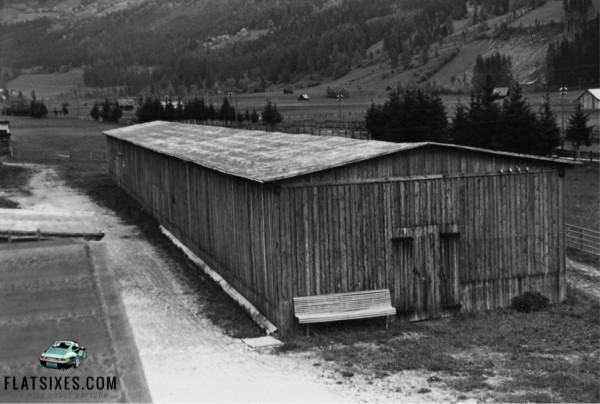
1948: imagine a world-beater manufactured on a dirt-floored barn!
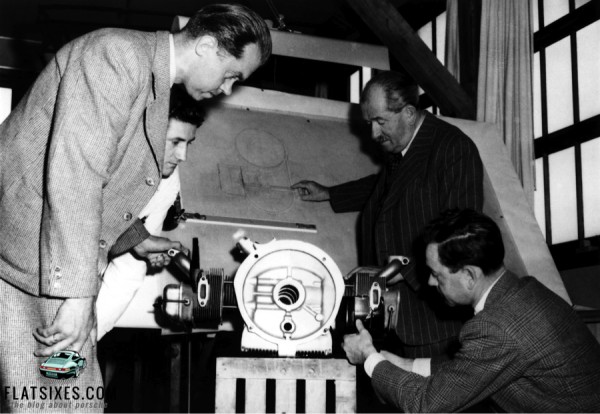
(At right) Dr. F. Porsche, Ferry Porsche, Stuttgart-Zuffenhausen plant, 1950
Other Porsche Blog Posts You Will Enjoy
What is it About the Porsche 356
10 Reasons You Should Own a Porsche 356
Porsche Origin of the Species
[Pictures Courtesy of the Porsche Archives, Germany]